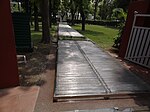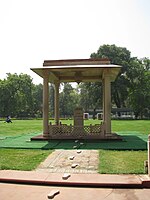Assassination of Indira Gandhi
1980s in Delhi1984 anti-Sikh riots1984 in India1984 murders in Asia1984 murders in India ... and 12 more
Assassinated heads of governmentAssassination of Indira GandhiAssassinations in IndiaCrime in DelhiDeaths by person in IndiaFemale murder victimsFunerals by personIndira GandhiIndira Gandhi administrationOctober 1984 events in AsiaState funerals in IndiaUse Indian English from August 2015

Indian Prime Minister Indira Gandhi was assassinated at 9:30 a.m. on 31 October 1984 at her residence in Safdarjung Road, New Delhi. She was killed by her bodyguards Satwant Singh and Beant Singh in the aftermath of Operation Blue Star, an Indian military action carried out between 1 and 8 June 1984 ordered by Indira Gandhi to remove Jarnail Singh Bhindranwale and his followers from the Golden Temple of Harmandir Sahib in Amritsar, Punjab. The collateral damage included the death of many pilgrims, as well as damage to the Akal Takht. The military action on the sacred temple was criticized both inside and outside India.
Excerpt from the Wikipedia article Assassination of Indira Gandhi (License: CC BY-SA 3.0, Authors, Images).Assassination of Indira Gandhi
Safdarjung Road, New Delhi
Geographical coordinates (GPS) Address Phone number Website Nearby Places Show on map
Geographical coordinates (GPS)
| Latitude | Longitude |
|---|---|
| N 28.600277777778 ° | E 77.206111111111 ° |
Address
Indira Gandhi Memorial Museum
Safdarjung Road 1
110011 New Delhi (Chanakya Puri Tehsil)
Delhi, India
Open on Google Maps





